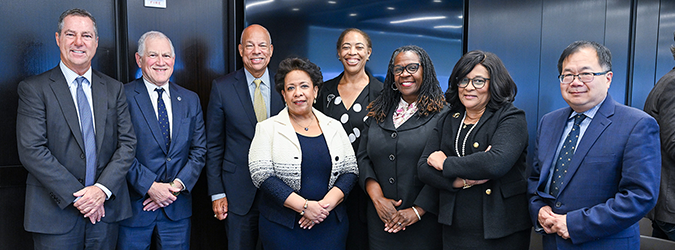Fostering a Culture of Belonging
2.25.2022
What color do you see?
You may have seen this picture circulating online years ago. You may swear it’s blue and black. Others will say it’s definitely gold and white. When you and your co-workers have differences, do you acknowledge and respect those differences?
This is one of several examples shown during a recent webinar presented by both the Women in Law Section and the Committee on Diversity, Equity, and Inclusion of the New York State Bar Association. “Fostering a Culture of Belonging” featured facilitator Lanre Sulola from the company Inner Ambitions. Here is a taste of some of the topics covered in the webinar in case you missed it:
WHAT DOES IT MEAN TO BELONG?
Sulola opened with questions about how to make an impact in the workplace and build a culture of belonging. When we build a sense of belonging, he says, employees feel free to be their true selves. They stop hiding parts of themselves.
Sulola outlined four key areas that help employees feel included:
- Psychological safety: allows us to be ourselves, make mistakes and learn from them
- Recognize diversity within our teams
- Identify opportunities to build connection
- Create greater cultural awareness
One participant shared how she seeks input from others with different backgrounds. “I am not an island, I can’t do everything by myself, because I won’t be the perfect fit for all people in all situations,” she said. Sulola says the benefits of belonging manifest in increased innovation, creativity, and productivity.
PSYCHOLOGICAL SAFETY IN THE WORKPLACE STUDY
Deloitte surveyed 3,000 people in 2014 for a report called Global Human Capital Trends. It found that 61% of respondents covered up part of who they are in the workplace. When it was broken down by groups, the demographics of those who masked their true selves were striking:
- 79% of black respondents
- 45% heterosexual white male respondents
- 63% Hispanic respondents
- 83% LGBTQ respondents
- 66% female respondents
Link to full study : https://www2.deloitte.com/content/dam/Deloitte/ar/Documents/human-capital/arg_hc_global-human-capital-trends-2014_09062014%20(1).pdf
Sulola says there are other masks we may use that are not as obvious as race and gender. They can include age, parenting, family of origin and illness. He reminded participants, “We are not going to be at our best when we have this internal dialogue of ‘what is safe to say’?”
One participant shared a concern about dealing with neuro differences, like ADHD. “Neurodiversity, ADHD, can be a huge benefit for attorneys. But those of us attorneys with it need certain specific help often well provided by support staff or teaming. But within the community of ADHD lawyers, most of us still hide it,” the participant said.
SOLUTIONS: HOW TO EFFECT CHANGE
After identifying areas to improve, Sulola mapped out starting points for creating a psychologically safe environment:
- Increase Active Listening
- Show curiosity for our differences
- Seek out differing viewpoints
- Approach difficult subjects with care
- Recognize that differences helps build connection and bring more insights
The full hour-long webinar is available for viewing here.
The next program from the Women in Law section “The Legislative Process in NYS: Women’s Fight for Equal Rights” is February 28 from 12 p.m. to 1:30 p.m. The program includes 1.5 MCLE credits.






